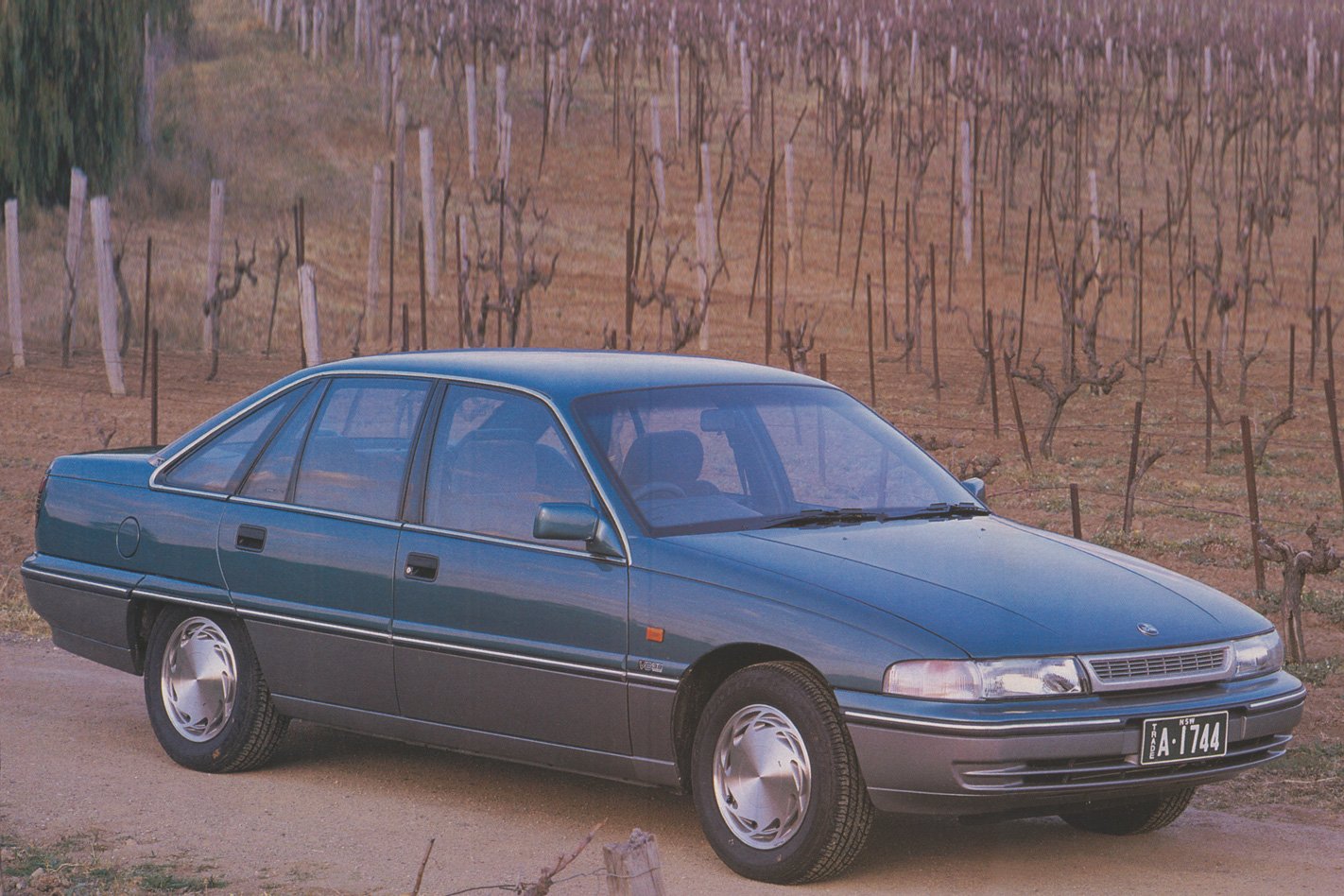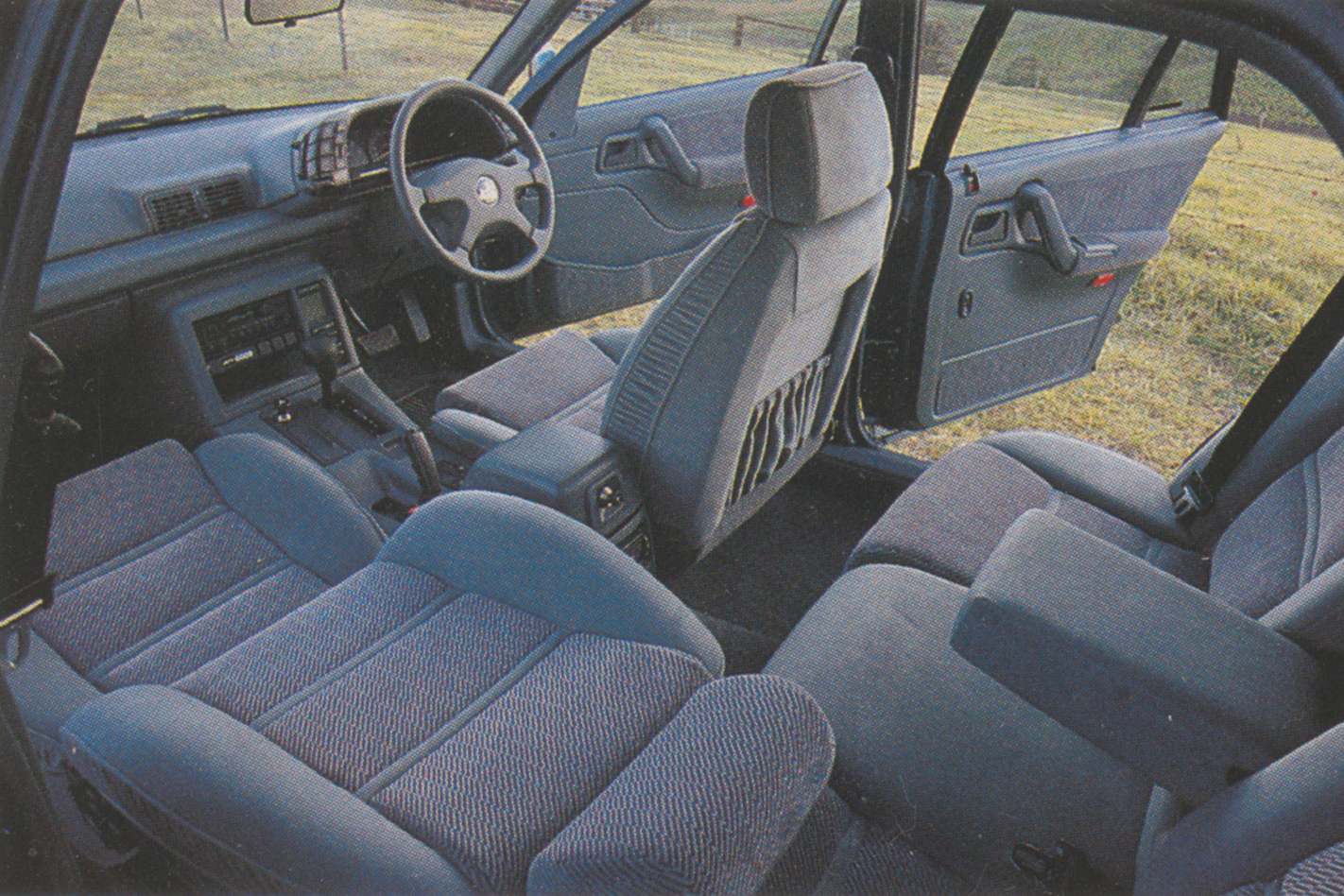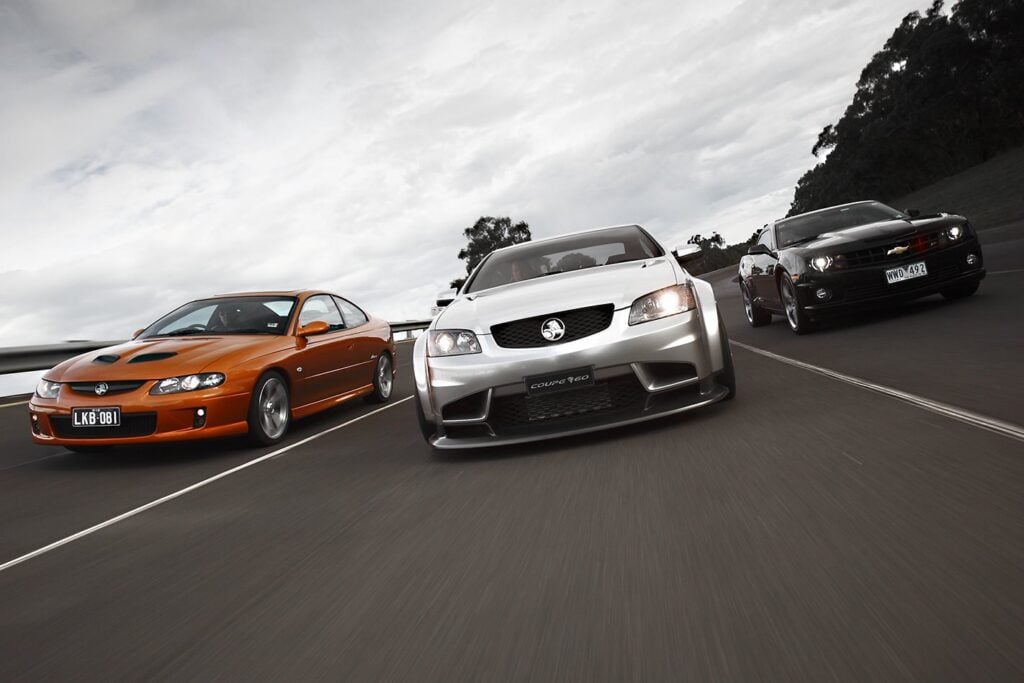Eerie, it was … the ghost of a test long since past. We’d grabbed any old micro-tape from the much used office pile to record our drive impressions of the new VP Commodores.
Slipping it into the dictaphone we inadvertently punched Play instead of Record, and heard ourselves from almost two years before, discussing the VN Calais. Twilight zone. If time had dimmed our recollections of the flagship VN, the seemingly spectral replay reminded aloud why the Calais finished third (Wheels, February 1990), against the imported Cressida and Accord.

Two years on and, praise be, refinement is what it has. A lot of detail development down the road, the VP Calais stands apart from, and discernibly above, its lesser Commodore siblings. That’s the first important point about the new VP range from Holden.
While the more humble VP models – Executive, S and Berlina – haven’t changed as dramatically under their (old) skins, they, too, have altered in ways that count. Plus a few that don’t…
With no sheetmetal revisions of any consequence, Holden has gone all out to sweeten the Commodore/Calais carrot by increasing equipment levels right across the range- a move no doubt hastened by the Falcon/Fairmont upgrade, which occurred with the introduction of Ford’s EB series.

Externally, the new Commodores differ only in their wheels and tyres, the treatment of the grille, taillights and other cosmetic tack-ons. Mind you, the benefits don’t necessarily stretch to some of the exterior cosmetic touches, particularly on the Calais – like the “unique formal acrylic grille”, the rear wheel-arch filler moulding that “integrates totally the band theme around the vehicle” (but doesn’t fit properly), or the dubious chrome-on-red ribs across the tail’s lenses and decor panel.
Mechanically, Holden would have you believe the availability of independent rear suspension is The Big News. Perhaps, but only to those comatose since early 1990, when semi-trailing arms were slipped under the Statesman/Caprice long wheelbase chassis. Since then, the independent rear end’s spread down to the short wheelbase Commodore/Calais ranks has been inevitable; not if, but when. lt was also predictable that the system would be standard only on the Calais and V8-only SS, where it widens rear track width by 9mm. The ride and handling gap it opens over the VN and live axle-quipped VP models is, however, considerably larger than 9 mm. All models get a much needed 34 mm stretch in front track, achieved by playing with wheel offsets rather than any dramatic suspension re-engineering.
The welcome surprise is that irs is optional for the Executive, S and Berlina sedans, albeit at a hefty $1300 to $1500 premium. Former Holden boss John Bagshaw was fond of quoting $500 as the cost penalty for the smoother riding, more benign handling irs. Maybe we can’t add up; maybe that’s why Holden is coy about forecasting how many low/intermediate level Commodores will get some extra independence. The impression conveyed is that GM won’t be shocked if the numbers are modest, because irs is a feature that has yet to be ‘sold’ to the public as a desirable safety and comfort feature.

There are two steering systems on the VP. The standard, variable rack and pinion, with its engine speed-related power assistance, is the commonplace fitment. The changes here are significant. The mechanism in the six cylinder models has been raised to the same height as the V8’s, to help quench undesirable bump steer and roll steer which characterised earlier Commodores. Revisions to valving have decreased the rate at which boost pressure varies between on-centre and cornering situations, so the wheel feels firmer and more consistently weighted either side of centre, enabling the VP to run ‘straighter’ with less driver attention. The second steering system is the Calais’ exclusive computer controlled Variotronic set-up which links the power assistance with road speed instead of engine speed.
Brakes carry over from the VN and continue with non-asbestos linings. The expected Bosch ABS-based brakes are still some way off. We won’t see them in a Commodore before 1992, and then they will first be seen in the Statesman/Caprice.
Holden’s transmissions and V6 engine continue essentially unchanged over the ’91 spec VN series, which incorporated several refinements and driveability changes. The standard V8 will soon be supplemented by a 180 kW HSV-developed version in all sedans except the S. This optional engine comes with mandatory irs.

Noise levels aside, the differences between VP and VN are many and marked. Besides being better equipped, the new models are better specced, better built and better behaved. The preview cars we drove had clearly the best build quality, the truest shut lines, the most accurate panel fit and the deepest, smoothest paint we’ve ever seen on Commodores. Holden claimed they were absolutely representative of what you will buy. We shall see.
As the live axle-equipped VP Commodore Exec is covered in detail elsewhere in this issue (Gulf War), we’ll concentrate on the Calais. Here the real improvements are found under the skin and within the cabin; in the mechanical upgrades- such as new engine speed-related power steering and the independent rear suspension- and in long features and equipment lists that leave very few blank spaces. Worthy as these aspects are, however, discerning drivers may agree the single most impressive feature of the VP Calais is its new-found sense of integrity.
Where the VN felt somewhat bitty and nervous on rough roads, as though its elements were only loosely tied together, the VP feels much tighter, more solid, and appreciably quieter with it. Lack of road and wind noise is conspicuous, and very little is heard from the body and mechanical parts either. The attention given to further isolating the mechanicals and insulating the body has really paid off. Our sound meter bore that out.

Comparing V8 versions, the numbers changed but the relationship didn’t. Though the V8 VP generates a heavier beat than the V6 VP at idle, it’s quieter under hard acceleration and in steady cruising, and its sound levels are considerably lower overall than those of the eight-cylinder VN Calais. Quieter at speed, too, than the wind-chafing EB Fairmont V8 we tried at the time.
Reduced sound levels play a large and welcome part in boosting the VP Calais’ perceived refinement to the point where it’s in danger of being seriously competitive with similar priced imports. The quiet achievement is reinforced by the efficient drivetrains and increasingly capable chassis dynamics. The familiar all-iron overhead valve engines may be blunt instruments compared to some, but they do the job with responsively punchy performance and remarkably thrifty economy.
The Commodore’s four speed auto trans drives as well as ever (albeit not quite as well as the Falcon’s electronically controlled dual-mode tranny), but Holden offers better gearshifting than Ford in five speed form.

Back to back runs also affirm that the independent rear suspension does indeed have an edge over the five link live axle for ride and handling. But it’s not chalk and cheese by any means. The problem, so to speak, is that the Commodore’s five link rear end has been improved to the point where it does a really good job of getting the power down, riding the bumps and lending a better balanced feel to the handling than has been the case until now.
But the advantage of the independent rear end’s lesser unsprung mass cannot be denied when the road is irregular and cruising speeds are high, because the Calais soaks up the bumps more absorbently, holds its line more sure-footedly on uneven surfaces, and has better roadholding when braking hard over ruts or corrugations.
Though the regular springs and dampers are more supple than before, the Calais’ ride is well controlled and slightly favours the firm side to avoid any suggestion of wallowing or floatiness over see-saw undulations. For even more positive control, the FE2 sports suspension is available, with 6×15 inch alloy wheels standard, 7x15s optional, and both with P205/65 tyres. Atop the non-adjustable steering column, the Calais’ wheel continues the VN’s four spoke styling theme but is 20 mm smaller in diameter. Hooray! Its rim has a pleasant grip and the reduced size is easier to use. Detailed changes have improved the instruments’ appearance and legibility, but the controls on the instrument binnacle escaped serious attention and remain contentious for some drivers.

The Calais is also much more computerised than its siblings. The most obvious evidence of that is the trip computer which presents digital trip meter and odometer displays as well as speed warning (adjustable) and readings for instant and average fuel consumptions, fuel used, distance to empty, average speed and elapsed trip time. All of which is as familiar as it is functional. Altogether new and different, however, is the Calais’ body computer which, the General says, can change the way an owner lives with his/her car, by performing mundane tasks automatically and providing innovative new features.
Technically, the body computer is two computers which together have eight analogue inputs (reading variable data such as dimming instrument illumination, road speed-related wiper rate, and road speed-related steering boost), plus 70 digital input/output lines which monitor the state of switches (on or off) and turn things like interior lights, headlamps, door locks and power windows on or off. Should the computer go down, back-up circuits ensure that major items such as power steering, electric windows, door locks and windscreen wipers can be manually switched.
Apart from overseeing the Variotronic power steering, the body computer administers the variable instrument dimming, automatically turns the headlamps off when the ignition key is removed and the driver’s door is opened, automatically turns off the interior dome light, memorises radio antenna heights, automatically times the rear demister, signals rear lamp failure and adjusts the wiper rate to road speed.

Other Calais features include climate control air-conditioning, limited-slip differential, warning chimes (for parking brake, low fuel, high speed, and engine overheating), upmarket sound system, rear lighter, footwell and door lamps, driver’s glove box and, by no means last or least, luggage tie-downs in the boot.
All of which makes the VP Calais by far the most fully featured regular size Holden ever. Add the proficient chassis dynamics, upgraded body integrity and significantly reduced noise levels and you have a very capable package.
On strong first impressions, the Calais in its VP incarnation has acquired the qualities needed in a serious import fighter, and to wipe the old tape clean.






